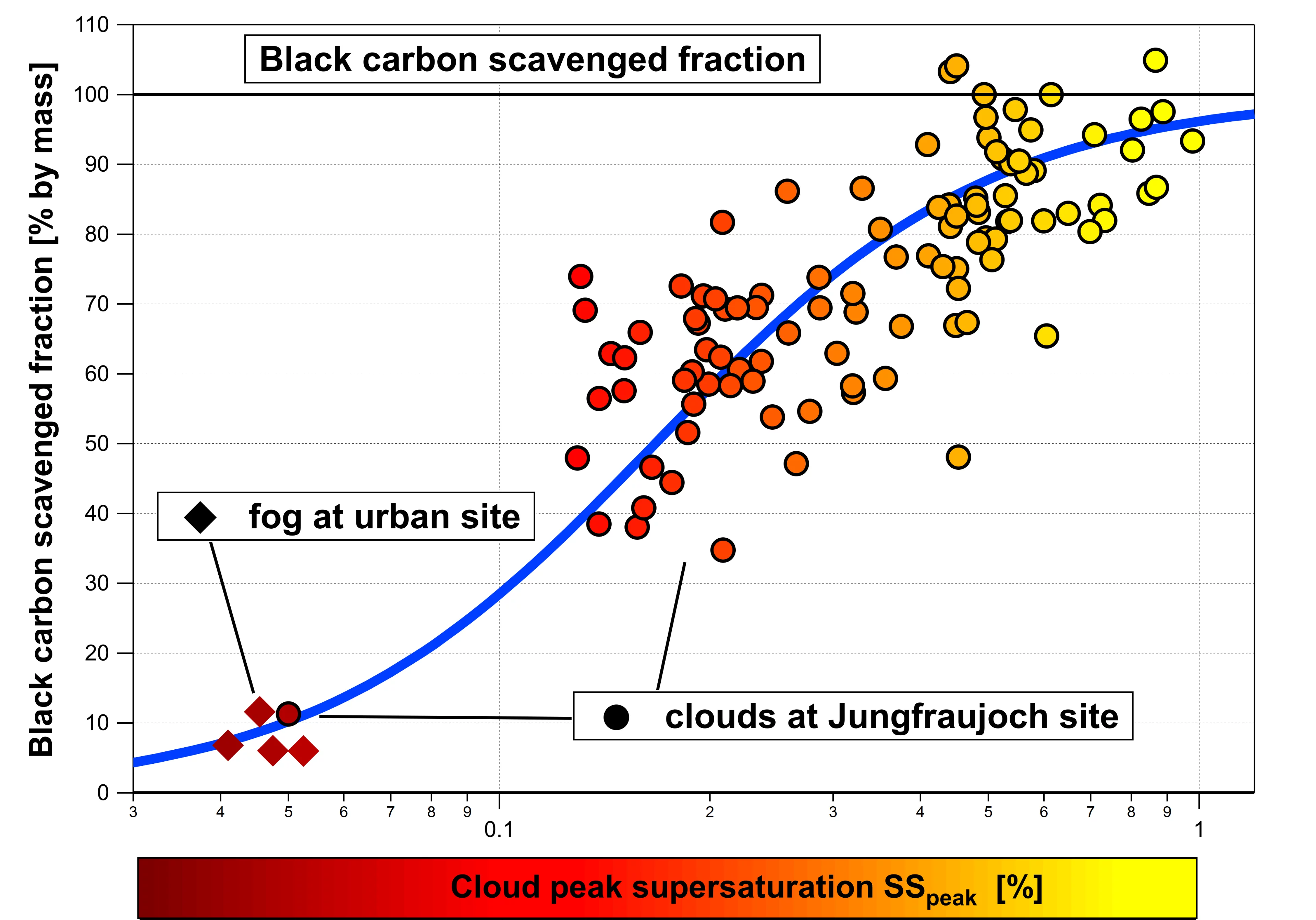
Soot particles mainly contain “black carbon”, an insoluble graphite-like material that makes them dark. Physical and chemical aging processes in the atmosphere are known to increase their size and solubility in water. Laser-based single particle measurements of cloud droplet residual particles were applied in this study in order to assess the formation of cloud droplets on such soot particles. It could be shown that the atmospheric aging increases their ability to act as nuclei for droplet formation in agreement with predictions based on Köhler theory constrained with measured particle size and composition.
Statistical analyses of many cloud events revealed that the fraction of black carbon mass scavenged into cloud droplets is primarily driven by cloud peak supersaturation and further modulated by the aforementioned dependence on particle properties. These findings provide a recipe to describe the in-cloud scavenging of black carbon in global model simulations and a reference data set for benchmarking such simulations.
Rainout after cloud scavenging is a main removal process of black carbon particles from the atmosphere. Improved simulation of this process eventually leads to a better description of the atmospheric lifetime of black carbon and, therefore, of its integrated climate impacts.
Contact:
Dr. Martin Gysel-Beer
Head Aerosol Physics Group
Paul Scherrer Institute PSI,
5232 Villigen PSI, Switzerland
Telephone: +41 56 310 4168
E-mail: martin.gysel@psi.ch
Original Publication:
Title: Cloud droplet activation properties and scavenged fraction of black carbon in liquid-phase clouds at the high-alpine research station Jungfraujoch (3580 m a.s.l.)
Authors: Ghislain Motos, Julia Schmale, Joel C. Corbin, Rob. L. Modini, Nadine Karlen, Michele Bertò, Urs Baltensperger, and Martin Gysel-Beer
DOI: 10.5194/acp-19-3833-2019
Acknowledgement to:
This work was supported by the ERC under grant ERC-CoG-615922-BLACARAT

